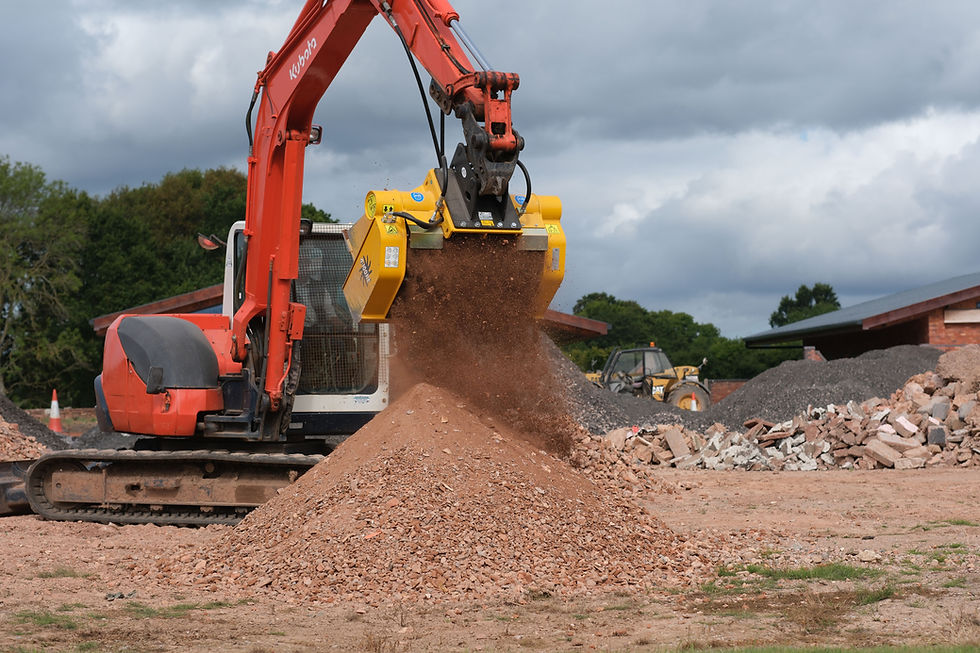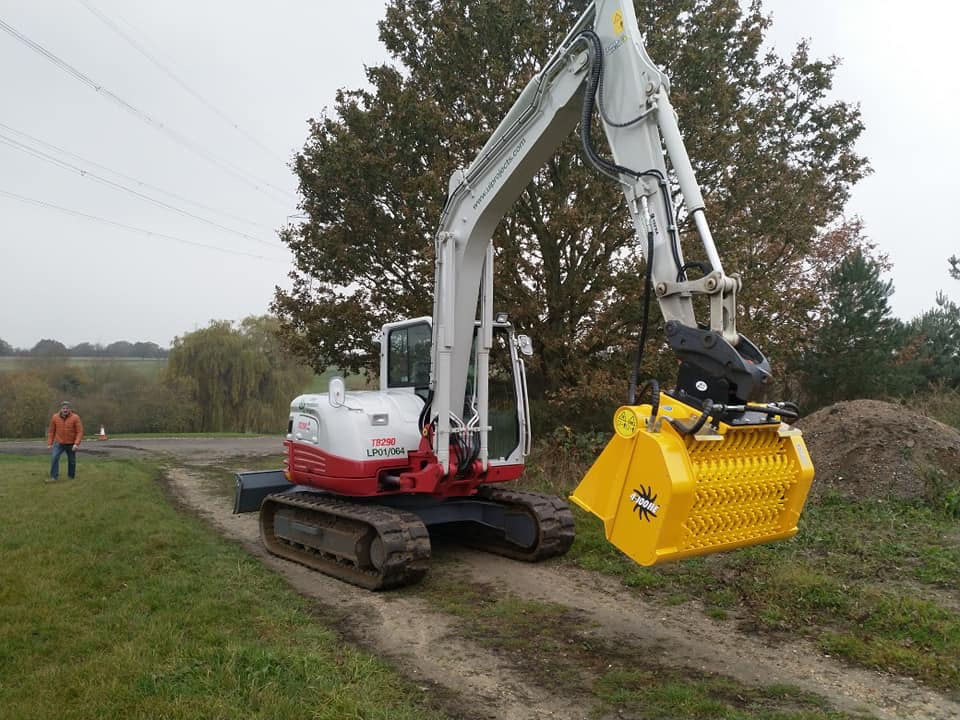Circular Construction: How Onsite Screening Can Turn Waste into Resources
- wheatwaysolutionsltd
- Aug 13
- 4 min read
Updated: Aug 19

In 2020, the world generated 2.24 billion tonnes of solid waste, with construction and demolition (C&D) activities responsible for almost a third, some 672 million tonnes of rubble, soil, and debris, much of it still containing valuable resources. That same year, the UK alone produced 59.4 million tonnes of non-hazardous C&D waste, accounting for 31% of the country’s total waste.
It’s little wonder, then, that the traditional 'dig and dump' method is giving way to a more circular approach. Increasingly, specifiers, contractors, and local authorities are recognising the value of keeping resources in use and diverting material away from landfill.
The good news? In 2020, the UK recovered 93% of its C&D waste, preventing 55 million tonnes from going to landfill. But with millions of tonnes still buried each year, the industry faces growing pressure to push recovery rates even higher.
One of the most practical tools for doing so is onsite screening, a process that allows contractors to transform mixed or low-grade soils and aggregates into clean, reusable products right where they’re generated.
The Importance of Onsite Screening
The benefits of onsite screening and a circular approach extend beyond just environmental gains. There can also be significant financial and operational advantages. This is exactly what Wiltshire-based contractor, RJT Groundworks Services, found after they began using a Gyru-Star screening bucket to process their ‘muck away’ waste.
By using the screening bucket to process this waste, they were able to recover a much larger amount of usable material, mostly topsoil and hardcore. Managing Director, Rich Tayler, estimates that this approach has cut their waste disposal costs by more than half, saving them £1,500 a month. That’s an £18,000-a-year saving just by redirecting waste away from landfill, without even taking into consideration any further savings on material and transport costs.
It’s also a simple way for contractors to improve their environmental credibility, which can be especially important when bidding for new contracts or navigating changing regulations.
Stakeholders and end users benefit too. The cost savings achieved through material reuse can be passed on, while the improved sustainability credentials of a project enhance its public and regulatory profile. Less site traffic and fewer heavy deliveries mean reduced disruption to the surrounding area.
Successfully Implementing Onsite Screening
So, what does successful implementation of onsite screening look like? How can this approach be applied to smaller projects without the budget or infrastructure to support large screening plant?
Onsite screening is nothing new, but due to the cost of hiring and operating large screening plants, it’s not always viable on smaller projects, especially if there is not a large volume of material that can be screened. Another common challenge is site access. In remote or rural areas, it’s not always possible to get a screening plant to site, or to transport material between the work area and the screening plant.
As a result, many contractors, such as Rich Tayler, have turned to screening buckets as an efficient yet affordable alternative.
Screening buckets make use of the machinery already onsite, keeping costs low and efficiency high. They are compact, quiet, and versatile enough to access tight jobsites and work effectively in wet or dry material. With no need for extra operators, additional fuel, or costly maintenance, they provide a practical, low-impact alternative to large screening plants, particularly on smaller or more confined projects.
Case Study: How Onsite Screening Has Supported Sweden’s Circular Approach to Energy Infrastructure
The Swedish national electrical grid is one of the best examples of how onsite screening supports a circular economy, and the value that a screening bucket can offer.
According to Svensk Energi, Sweden has about 329,500 km (204,742 miles) of underground power cables across its local and high-voltage networks. Regulations require every metre of these cables to be padded with a <8 mm material, typically sand, in order to protect against stones and other debris.
However, Sweden’s geology consists mainly of crystalline and metamorphic rocks, such as granite, marble, and sandstone, meaning sand is in short supply. As sand is also essential to the country’s fresh water supply, local authorities have implemented a tax on the material, and new permits for extracting sand are not available. As a result, sand is a very expensive resource, driving up the cost of installing underground utilities.
This is why many forward-thinking contractors have turned to onsite screening as an alternative to the traditional ‘dug and dump’ approach. Using screening buckets, operators are able to recycle trench arisings into high-quality padding material, which can be used in place of sand.

Screening buckets were the natural choice for this application, as they enable operators to screen material directly into the trench, streamlining the backfilling process. They can also be used on sites in remote areas, which are inaccessible to traditional screening plants or trucks and HGVs.
The result has been significant cost savings, both in materials and operationally. In one case, a machine operator reported a payback time of only seven hours for their screening bucket, just in material costs alone.
Gyru-Star screening buckets, in particular, have been one of the most popular choices for the utilities industry. Unlike most screening buckets, Gyru-Star uses flexible polyurethane stars, which screen almost any material without crushing or shredding. This means that oversize material, such as stones, is completely removed from the padding material, rather than being crushed and mixed in.
These buckets have been so successful that their use is now considered best practice by E.ON (one of the country’s largest energy companies) and Svenska kraftnät, the Swedish national grid.
Closing the Loop
Onsite screening isn’t just a way to handle waste; it’s a method of creating value from materials that might otherwise be discarded. For contractors, it’s an opportunity to cut costs, reduce environmental impact, and meet the growing demand for sustainable practices.
If screening becomes standard practice on projects of all sizes, the industry can keep more materials in circulation, reduce reliance on virgin resources, and move closer to a genuinely circular economy. The tools exist. The results are proven. Now it’s about making them part of everyday construction.




Comments